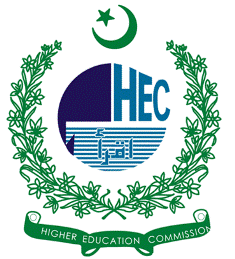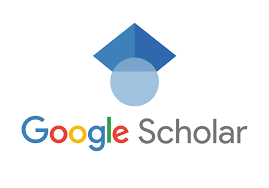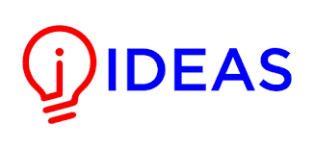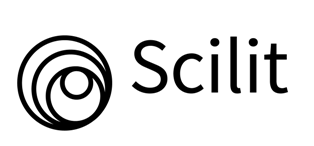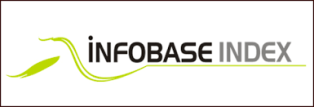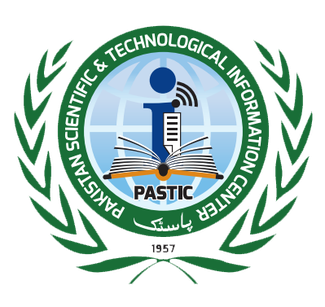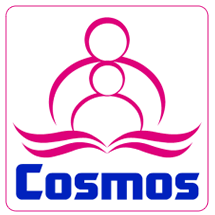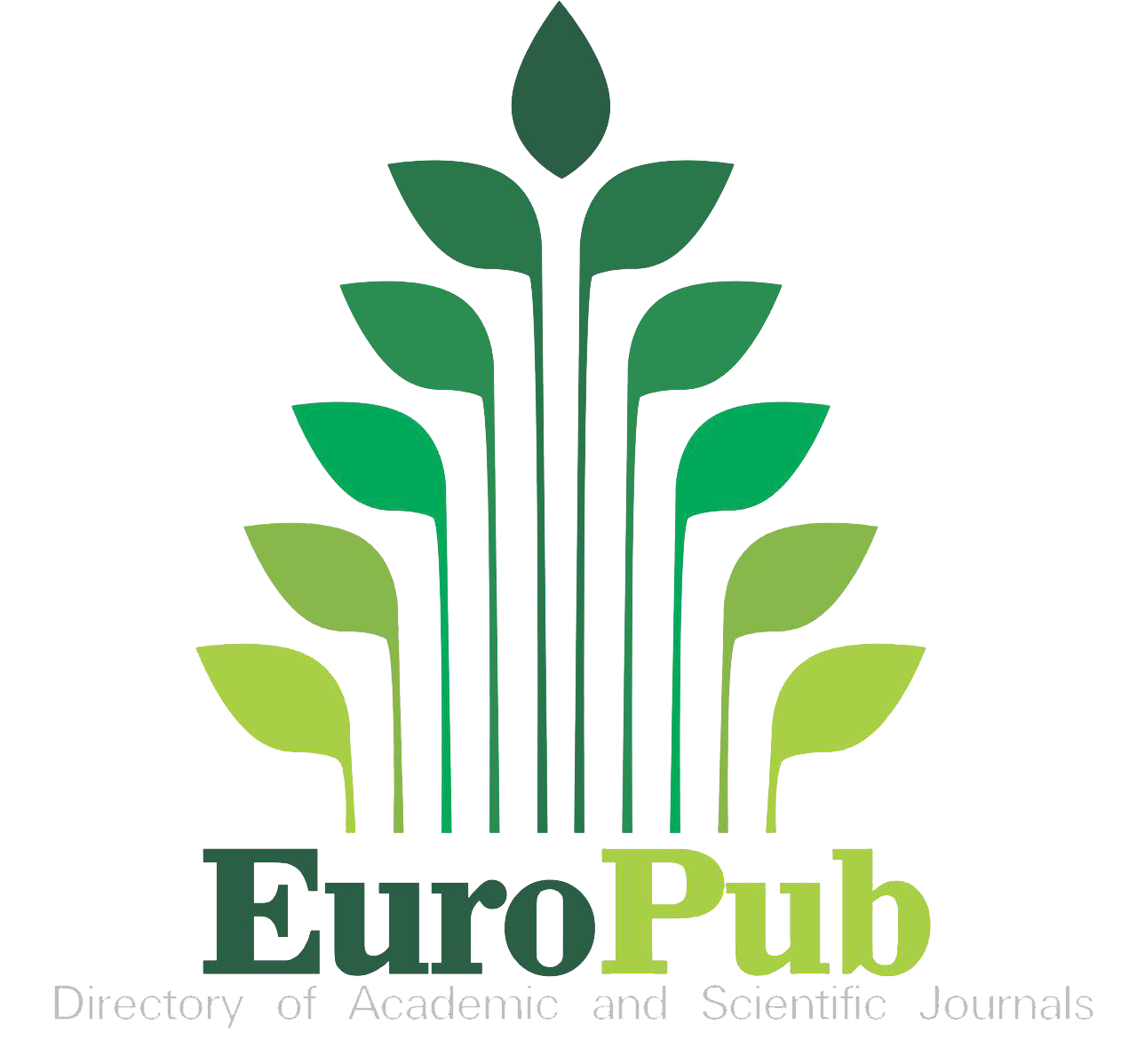Assessing the IoT Acceptance at Public Sector Universities of Sindh, Pakistan
Keywords:
Internet of Things (IoT), UTAUT2, Smart University, Higher Education, Technology acceptanceAbstract
The Internet of Things (IoT) technology blends the real world and digital life, ensuring seamless integration for accomplishing tasks to make life easier. Analysts often get lost in the deep technical details of IoT, but there is a lack of focus on student acceptance and willingness to adopt these technologies. Concentrating on the factors that drive the adoption of IoT technologies. This study employs a quantitative approach to investigate the deep interrelations and interactions in the process with the Unified Theory of Technology Acceptance (UTAUT2) and other factors like IoT Skills, Trust, and Personal Innovativeness. Through an explanatory survey method, data was collected from 389 students across 5 public universities in Sindh, Pakistan, to assess the level of acceptance of IoT technologies in universities among the students. This study produces existing literature by expanding the UTAUT2 model to incorporate novel elements relevant to the acceptability and application of IoT in developing nations. It provides important recommendations for policymakers and university stakeholders. The results highlight the need for improving IoT infrastructure, incorporating central IoT courses in academic offerings, and developing an enabling environment for successful technology adoption. The evidence presents inadequate proper IoT infrastructure and supporting environment in institutions. In addition, the adoption of IoT among students is evidenced by the study field instead of by the professional need for IoT.
References
Abdulrahman S. Alenizi & Khamis A. Al-Karawi, “Internet of Things (IoT) Adoption: Challenges and Barriers,” Proc. Seventh Int. Congr. Inf. Commun. Technol., pp. 217–229, 2022, doi: https://doi.org/10.1007/978-981-19-2394-4_20.
E. L. M. José M. Fernández-Batanero, Marta Montenegro-Rueda, José Fernández-Cerero, “Adoption of the Internet of Things in higher education: opportunities and challenges,” Interact. Technol. Smart Educ., 2023, [Online]. Available: https://www.emerald.com/insight/content/doi/10.1108/itse-01-2023-0025/full/html
and M. K. L. McRae, K. Ellis, “The Internet of Things (IoT): Education and Technology,” Curtin Univ., 2018, [Online]. Available: https://www.ncsehe.edu.au/app/uploads/2018/02/IoTEducation_Formatted_Accessible.pdf
and M. N. A.-K. M. Al-Emran, S. I. Malik, “A Survey of Internet of Things (IoT) in Education: Opportunities and Challenges,” Stud. Comput. Intell., vol. 846, pp. 197–209, 2020.
M.-R. M. Anees Muhammad Jamali, Shahmurad Chandio, “Acceptance of IoT by Students in Universities of Sindh , Pakistan : A Proposed Framework,” J. Appl. Eng. Technol., vol. 7, no. 2, 2023, doi: https://doi.org/10.55447/jaet.07.02.127.
Maria R. Ebling, “Pervasive Computing and the Internet of Things,” IEEE Pervasive Comput, vol. 15, no. 1, pp. 2–4, 2016, [Online]. Available: https://www.computer.org/csdl/magazine/pc/2016/01/mpc2016010002/13rRUIIVlhZ
I. S. Ammad-ul-Islam, Tanveer Nazir, Irfan Ali, Sania Rafiq, Muhammad Musharaf Ahsan, “Internet of Things (IOT) in Developing the Smart Farming and Agricultural Technologies,” Int. J. Innov. Sci. Technol., vol. 6, no. 4, pp. 1621–1634, 2024, [Online]. Available: https://journal.50sea.com/index.php/IJIST/article/view/1032
S. R. Rimsha Jamil Ghilzai, Urwa Bibi, Hafiz Gulfam Ahmad Umer, “Heart Sense: A novel IoT integrated Deep Learning Based ECG Image Analysis for Enhanced Heart Disease Prediction,” Int. J. Innov. Sci. Technol., vol. 7, no. 1, pp. 336–357, 2025, [Online]. Available: https://journal.50sea.com/index.php/IJIST/article/view/1208
P. G. and B. S. V. Hassija, V. Chamola, V. Saxena, D. Jain, “A Survey on IoT Security: Application Areas, Security Threats, and Solution Architectures,” IEEE Access, vol. 7, pp. 82721–82743, 2019, doi: 10.1109/ACCESS.2019.2924045.
N. Van Thuya, “The adoption of the internet of things in Vietnam,” Int. J. Innov. Creat. Chang, vol. 12, no. 4, 2020, [Online]. Available: https://www.ijicc.net/images/vol12/iss4/12403_Thuy_2020_E_R1.pdf
IEEE Computer Society, “The 8th IEEE International Conference on Technology for Education (T4E 2016),” Indian Inst. Technol. Bombay, Mumbai, 2016, [Online]. Available: https://sn.committees.comsoc.org/call-for-papers/the-8th-ieee-international-conference-on-technology-for-education/
S. ur R. shahbaz Pervez, “Role of Internet of Things in Higher Education,” Proc. ADVED 2018- 4th Int. Conf. Adv. Educ. Soc. Sci., 2018, [Online]. Available: https://www.ocerints.org/adved18_e-publication/papers/216.pdf
Haiping Liu, “Smart campus student management system based on 5G network and Internet of Things,” Microprocess. Microsyst., p. 103428, 2020, doi: https://doi.org/10.1016/j.micpro.2020.103428.
and C. D. G. B. Sánchez-Torres, J. A. Rodríguez-Rodríguez, D. W. Rico-Bautista, “Smart Campus: Trends in cybersecurity and future development,” Rev. Fac. Ing, vol. 27, no. 47, 2018.
G. P.-N. José Varela-Aldás, Christian Junta , Elias Choque, “Influence of Higher Education on IoT Acceptance through Hands-On Learning,” TEM J., vol. 14, no. 1, pp. 528–539, 2025, doi: 10.18421/TEM141-47.
S. Nižetić, P. Šolić, D. López-de-Ipiña González-de-Artaza, and L. Patrono, “Internet of Things (IoT): Opportunities, issues and challenges towards a smart and sustainable future,” J. Clean. Prod., vol. 274, p. 122877, Nov. 2020, doi: 10.1016/J.JCLEPRO.2020.122877.
Z. B. H. Hayder Salah Hashim, Yunus Bin Yusoff, “Usage of Internet of Things in Iraqi Higher Education: An Extension of Information System Success Model,” Eng. Technol. Appl. Sci. Res., vol. 15, no. 1, 2025, [Online]. Available: https://www.etasr.com/index.php/ETASR/article/view/8844
Y. M.-C. & C. D. G. Dewar Rico-Bautista, “Smart University: A Review from the Educational and Technological View of Internet of Things,” Inf. Technol. Syst., pp. 427–440, 2019, [Online]. Available: https://link.springer.com/chapter/10.1007/978-3-030-11890-7_42
and A. A. S. A. A. Jamali, K. Ur, R. Khoumbhati, A. M. Jamali, A. Bhutto, “A Conceptual Framework of ICT Impact on Students’ Academic Performance: Higher Education Institutes (HEIs) in Sindh,” Educ. Comput. Sci., 2023, [Online]. Available: https://www.semanticscholar.org/paper/A-Conceptual-Framework-of-ICT-Impact-on-Students’-Jamali-Ur/0836055a739256ef889e96da3cb1aa19ddb22fd8
HEC, “Higher Education Vision 2025: Carpediem Seize the day for a better future,” 2017, [Online]. Available: https://www.hec.gov.pk/english/news/Documents/HEC-Vision-2025.pdf
and M. C. T. Lucke, P. K. Dunn, “Activating learning in engineering education using ICT and the concept of ‘Flipping the classroom,” Eur. J. Eng. Educ, vol. 42, no. 1, 2017, [Online]. Available: https://www.tandfonline.com/doi/abs/10.1080/03043797.2016.1201460
B. H. K. Maqbool Ali, Hafiz Syed Muhammad Bilal, Muhammad Asif Razzaq, Jawad Khan, Sungyoung Lee, Muhammad Idris, Mohammad Aazam, Taebong Choi, Soyeon Caren Han, “IoTFLiP: IoT-based flipped learning platform for medical education,” Digit. Commun. Networks, vol. 3, no. 3, pp. 188–194, 2017, doi: https://doi.org/10.1016/j.dcan.2017.03.002.
and F. J. G.-P. M. L. Sein-Echaluce, Á. Fidalgo-Blanco, A. M. Balbín, “Flipped Learning 4.0. An extended flipped classroom model with Education 4.0 and organisational learning processes,” Univers. Access Inf. Soc, vol. 23, pp. 1001–1013, 2024, [Online]. Available: https://link.springer.com/article/10.1007/s10209-022-00945-0
and K. P. S. Meacham, A. Stefanidis, L. Gritt, “Internet of Things for Education: Facilitating Personalised Education from a University’s Perspective,” Thwenty Third Int. Conf. Technol. Educ, pp. 69–82, 2018, [Online]. Available: https://www.semanticscholar.org/paper/Internet-of-Things-for-Education%3A-Facilitating-from-Meacham-Stefanidis/692cae16ad9fb6eefba4be5523d01f69b78bed6a
Joseph Taylor, “Pakistan Higher Education Commission Vision 2025,” Int. Univ. uk, 2017, [Online]. Available: https://www.universitiesuk.ac.uk/sites/default/files/uploads/UUKi reports/PakistanHE_iNotes_June17_final.pdf
C. Or and E. Chapman, “Development and validation of an instrument to measure online assessment acceptance in higher education,” Br. J. Educ. Technol, vol. 53, no. 4, pp. 977–997, 2022, doi: https://doi.org/10.1111/bjet.13180.
V. Venkatesh, J. Y. L. Thong, and X. Xu, “Unified theory of acceptance and use of technology: A synthesis and the road ahead,” J. Assoc. Inf. Syst., vol. 17, no. 5, pp. 328–376, 2016, doi: 10.17705/1JAIS.00428.
and M. B. L. Ionescu-Feleaga, B. Ștefan Ionescu, “The Iot Technologies Acceptance In Education By The Students From The Economic Studies In Romania,” Amfiteatru Econ, vol. 23, no. 57, pp. 342–359, 2021, [Online]. Available: https://ideas.repec.org/a/aes/amfeco/v23y2021i57p342.html
K. H. Muhammad Farhan, Sohail Jabbar, Muhammad Aslam, Mohammad Hammoudeh, Mudassar Ahmad, Shehzad Khalid, Murad Khan, “IoT-based students interaction framework using attention-scoring assessment in eLearning,” Futur. Gener. Comput. Syst., vol. 79, no. 3, pp. 909–919, 2018, [Online]. Available: https://www.sciencedirect.com/science/article/abs/pii/S0167739X17310920
and P. L. M. Kassab, J. DeFranco, “A systematic literature review on Internet of things in education: Benefits and challenges,” J. Comput. Assist. Learn, vol. 36, no. 2, 2020, doi: https://doi.org/10.1111/jcal.12383.
S. Madakam, R. Ramaswamy, and S. Tripathi, “Internet of Things (IoT): A Literature Review,” J. Comput. Commun., vol. 03, no. 05, pp. 164–173, 2015, doi: 10.4236/JCC.2015.35021.
R. Nthenya Wambua and D. Collins Oduor Ondiek, “Implications of Internet of Things (IoT) on the Education for students with disabilities: A Systematic Literature Review,” Int. J. Res. Publ, vol. 102, no. 1, pp. 378–407, 2022.
V. Venkatesh, J. Y. L. Thong, and X. Xu, “Consumer acceptance and use of information technology: Extending the unified theory of acceptance and use of technology,” MIS Q. Manag. Inf. Syst., vol. 36, no. 1, pp. 157–178, 2012, doi: 10.2307/41410412.
and T. van R. A. J. A. M. van Deursen, A. van der Zeeuw, P. de Boer, G. Jansen, “Development and validation of the Internet of Things Skills Scale (IoTSS),” Inf. Commun. Soc, vol. 25, no. 13, pp. 1883–1899, 2022, [Online]. Available: https://www.tandfonline.com/doi/full/10.1080/1369118X.2021.1900320
R. Agarwal and J. Prasad, “A Conceptual and Operational Definition of Personal Innovativeness in the Domain of Information Technology,” Inf. Syst. Res, vol. 9, no. 2, pp. 204–215, 1998.
and S. C. J. Melorose, R. Perroy, “Trust and TAM in Online Shopping: An Integrated Model,” MIS Q., vol. 27, no. 1, pp. 51–90, 2023, doi: 10.2307/30036519.
W. R. B. Meredith D. Gall, Joyce P. Gall, “Educational research : an introduction,” Pearson/Allyn & Bacon, p. 672, 2007, [Online]. Available: https://books.google.com.pk/books/about/Educational_Research.html?id=l9JfQgAACAAJ&redir_esc=y
and G. A. Q. C. M. D. P. Q. Castro, M. D. P. C. Arellano, M. A. C. Sernaqué, “Digital inclusion improves adult academic performance as a student of a second professional caree [Inclusión digital mejora rendimiento académico del adulto como estudiante de una segunda carrera profesional,” RISTI - Rev. Iber. Sist. e Tecnol. Inf, 2021.
R. B. Johnson and A. J. Onwuegbuzie, “Mixed Methods Research: A Research Paradigm Whose Time Has Come,” Educ. Res, vol. 33, no. 7, 2004, [Online]. Available: https://journals.sagepub.com/doi/10.3102/0013189X033007014
A. Gunasinghe, J. A. Hamid, A. Khatibi, and S. M. F. Azam, “The adequacy of UTAUT-3 in interpreting academician’s adoption to e-Learning in higher education environments,” Interact. Technol. Smart Educ, vol. 17, no. 1, pp. 86–106, 2020, [Online]. Available: https://www.emerald.com/insight/content/doi/10.1108/itse-05-2019-0020/full/html
and D. W. R. Krejcie, V.Morgan, “Determining sample Size for Research Activities, Educational and Psychological Measurement,” Int. J. Employ. Stud, vol. 18, no. 1, pp. 89–123, 1996, [Online]. Available: https://journals.sagepub.com/doi/10.1177/001316447003000308
K. S. Taber, “The Use of Cronbach’s Alpha When Developing and Reporting Research Instruments in Science Education,” Res. Sci. Educ., vol. 48, no. 6, pp. 1273–1296, Dec. 2018, doi: 10.1007/S11165-016-9602-2/TABLES/1.
and R. M. A. Muhammad, S. Chandio, “Investigating The Content Validity of An Iot-Acceptance Survey Instrument in Higher Education : A Study in The Context of Sindh,” Asian Bull. Big Data Manag., vol. 3, no. 2, pp. 172–189, 2024, [Online]. Available: https://abbdm.com/index.php/Journal/article/view/78
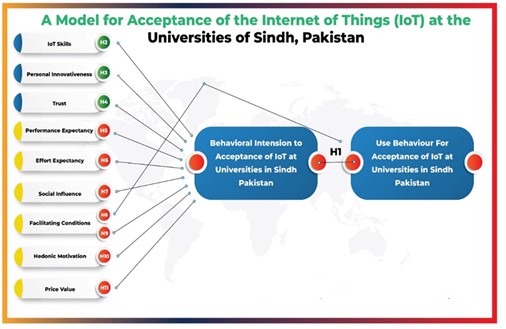
Downloads
Published
How to Cite
Issue
Section
License
Copyright (c) 2025 50sea

This work is licensed under a Creative Commons Attribution 4.0 International License.

